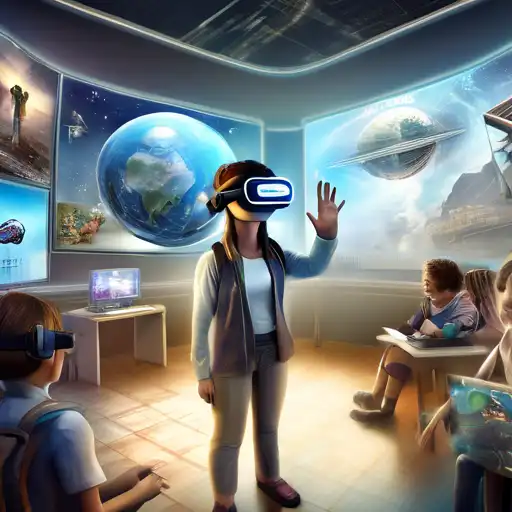Introduction to Virtual Reality in Education
Virtual Reality (VR) is rapidly transforming the educational landscape, offering immersive learning experiences that were once the stuff of science fiction. This technology is not just enhancing the way students learn but is also revolutionizing teaching methodologies. By simulating real-world environments, VR provides a unique platform for experiential learning, making it the next frontier in education.
The Benefits of VR in Learning
VR in education comes with a plethora of benefits. It fosters engagement by placing students in interactive 3D environments, making learning more captivating than traditional methods. Moreover, VR caters to various learning styles, ensuring that visual, auditory, and kinesthetic learners can all benefit. Here are some key advantages:
- Enhanced Engagement: VR's immersive nature keeps students interested and motivated.
- Improved Retention: Experiential learning through VR leads to better memory retention.
- Safe Learning Environment: Students can explore hazardous or inaccessible scenarios safely.
- Accessibility: VR can bring distant or historical locations right into the classroom.
Implementing VR in the Classroom
Integrating VR into educational settings requires careful planning and consideration. Schools and institutions need to assess their infrastructure, budget, and curriculum needs to effectively adopt this technology. Training for educators is also crucial to maximize the potential of VR in teaching. For more insights on EdTech trends, visit our dedicated section.
Challenges and Considerations
Despite its benefits, VR in education faces several challenges. The cost of VR equipment and the need for high-quality content can be prohibitive for some institutions. Additionally, there's the issue of ensuring equitable access to this technology across different socio-economic groups. Addressing these challenges is essential for the widespread adoption of VR in education.
Future Prospects of VR in Education
The future of VR in education is bright, with advancements in technology making it more accessible and affordable. As VR content becomes more diverse and tailored to educational needs, its integration into curricula worldwide is expected to grow. This evolution promises to make learning more interactive, engaging, and effective for students everywhere.
For those interested in the latest digital education tools, our website offers comprehensive guides and reviews.
Conclusion
Virtual Reality is set to redefine the educational experience, offering unparalleled opportunities for immersive learning. While challenges remain, the potential benefits of VR in education are too significant to ignore. As technology continues to evolve, VR will undoubtedly play a pivotal role in shaping the future of education.
